The Faraday Museum
at The Royal Institution
The Faraday Museum is an amazing venue where you can discover historic artefacts from over 200 years of world class scientific research, experiment and invention. And it's free to visit!
Part of the Royal Institution of Great Britain, the museum is named after one of Britain's most famous scientists, Michael Faraday who worked here nearly two hundred years ago.
Here you can see Faraday's actual laboratory, while learning about the vital research and development that the Institution continues to be involved in.
For anyone interested in science, this is a must-see venue among many London museums.
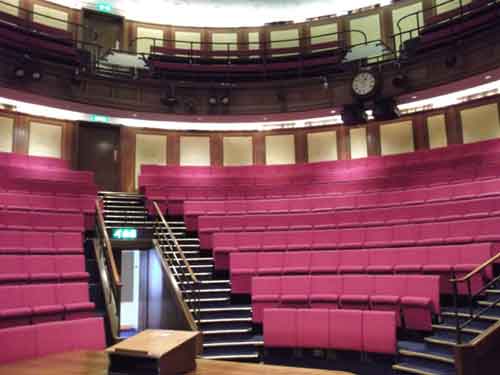
Opening Hours and Admission
Free
(£3 for e-guide – ID required as deposit)
Open Monday – Friday 9am – 6pm
Address
21 Albemarle Street, London, W1S 4BS
Tel: 020 7409 2992
Email: ri@ri.ac.uk
|
A quick guide to this page |
|
Guide To This Page
About The Royal Institution
This historic institution was established in 1799 with a mission to introduce new technology and to teach science to the general public. Over two hundred years later, it continues to fulfil that purpose.
If you are already aware of the Royal Institution it may well be because of their famous Christmas Lectures that were started by Michael Faraday himself in 1826 and have been continuing every year since.
This is a living, working venue and is far more than just a museum. The Institution continues its role as a world class centre for research and development (currently investigating new treatments for cancer and other medical developments).
Over the years, the important research that has been conducted here has helped to win some fourteen Nobel prizes!
Three floors of the building are open to the public and you can come and enjoy the Faraday Museum, wander round the libraries and the lecture theatre (when not in use) or even just pop in for a coffee and a bite to eat.
As well as ongoing scientific work, The Royal Institution continues to deliver an extensive events programme including weekly evening lectures, family fun days, a schools programme, online resources and of course the famous Christmas Lectures.
About the Faraday Museum
The Royal Institution started collecting scientific instruments, apparatus, manuscripts, books and other objects soon after it was founded.
This historic collection formed the basis of the museum which was centred around Michael Faraday's actual Magnetic Laboratory which can still be seen in the basement today (and is one of the undoubted highlights of the museum).
The Faraday Museum underwent and extensive refurbishment in 2008 when the collection was extended over three floors of the building. This wider collection is now called 'Science in The Making'.
To enhance your experience you can pay for an interactive guide that you pick up from reception. You can carry these around with you and they operate on a simple point and click basis. They are a good idea to help illustrate, explain and bring to life the many exhibits on display.
My Review of the Faraday Museum
We visited on a quiet midweek morning and started by going down into the basement where the main museum collection is based. If like us you enjoy visiting London museums and you love science, then you will certainly enjoy this place, as it has historic scientific instruments galore!
You get to see the apparatus and equipment that were actually used in many of the original experiments that you were taught about at school!
There are voltammeters and electromagnets used by Michael Faraday in his experiments with electricity and magnetism, a collection of Humphrey Davy's famous safety lamps, along with countless other instruments of historic significance.
The whole building has recently been refurbished and everything is spic and span and very well presented.
Opposite Michael Faraday's original magnetic laboratory, there is a modern research room where the Royal Institution continues some of its pioneering work. This gives a wonderful comparison between the world of eighteenth and nineteenth century experimentation and that of the twenty first century. It acts as a visual reminder of how science is a continuing development, building upon the discoveries and work of previous scientists.
After this visit we explored the other floors that are open to the public. It felt strange wandering the carpeted corridors, book lined libraries and other rooms with their stunningly beautiful Georgian interiors. It almost felt as if we had inadvertently wandered into some private members club!
But I have to admit I got my biggest thrill from suddenly finding myself standing in the lecture theatre and remembering the many Royal Institution Christmas Lectures I had enjoyed watching for so many years as a child.
We later stopped for a coffee and a bite to eat in the cafe bar. This proved to be a very pleasant experience as we were served by a couple of gentleman who have to be among the best dressed and most politely spoken waiters we have ever encountered.
We had an excellent coffee with a roast pepper and brie baguette, while enjoying overheard snippets of conversation from the academics and scientists sitting nearby.
This is certainly a lovely relaxing place to get away from the bustle and noise of nearby Bond Street and Piccadilly.
I think the abiding memory I will have of the Faraday Museum and The Royal Institution is how it is so obviously much more than just a museum. It feels like a genuine privilege to be able to walk among these rooms which still form an important centre for scientific research and discovery.
Home > Specialist Museums > Faraday Museum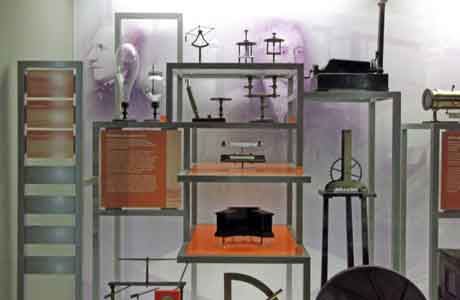
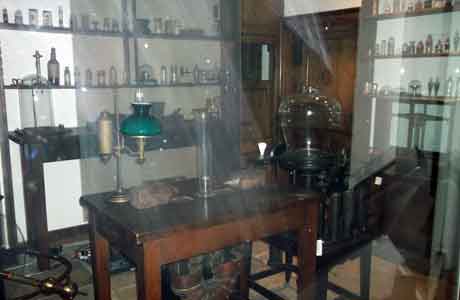
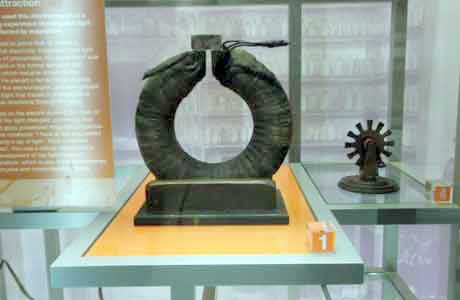
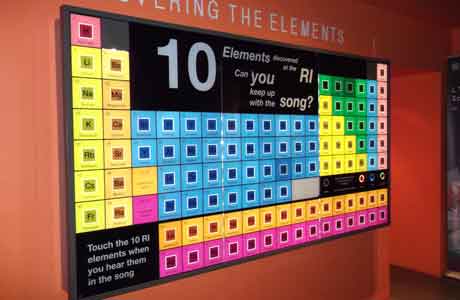
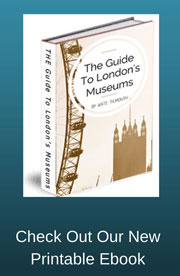
New! Comments
Have your say about what you just read! Leave me a comment in the box below.